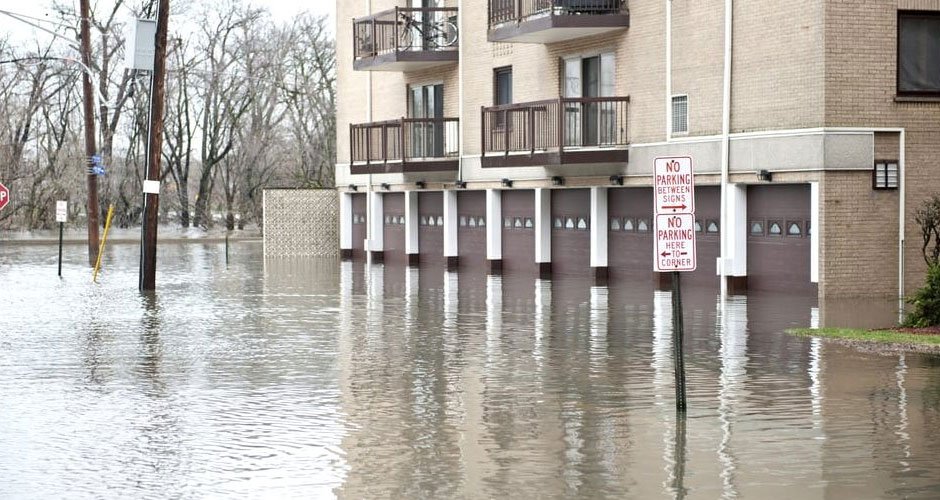The Role of Imp Walls in Protecting Commercial Properties from Water Damage and Flooding

Commercial properties face a significant threat from flooding, which inflicts extensive damage and disrupts businesses. Consequently, the importance of impervious walls in safeguarding these assets against water-related harm has escalated considerably. Serving as critical defense mechanisms, these walls alleviate risks such as structural detriment, financial setbacks, and operational interruptions. This article delves into the pivotal role imp walls play in fortifying commercial properties and examines the essential factors governing their design and execution.
Understanding Imp Walls
Specifically designed to resist water penetration, imp walls become essential in commercial property flood mitigation strategies. Unlike their traditional counterparts – susceptible to water absorption and subsequent weakening over time – imp walls boast construction materials with unique capabilities: they repel water; this action prevents moisture from infiltrating into the building envelope.
Structural Protection
Imp walls primarily function as structural protections against flooding: they create a barrier between the building’s interior and exterior environments—preventing water seepage. This crucial role safeguards not only commercial property infrastructure, but also its foundation and walls from damage; therefore, it underpins long-term durability and safety.
Flood Risk Reduction
The crucial role of imp walls lies in mitigating flood damage risk to commercial properties, particularly those situated in flood-prone zones or proximity to water bodies. By expertly containing and redirecting floodwaters away from the building, these structures minimize potential impact on business operations, assets and occupants that could arise from severe flooding.
Property Preservation
Imp walls not only safeguard the structural integrity of commercial buildings but also preserve housed valuable property and assets. By effectively controlling floodwaters, imp walls avert equipment damage, inventory loss, merchandise destruction – all critical business elements; this minimizes financial setbacks and expedites recovery post-flooding.
Regulatory Compliance
Regulations and building codes in numerous jurisdictions mandate that commercial properties situated in flood-prone areas implement flood mitigation measures, such as imp walls. To ensure occupants’ safety and minimize liability for property owners and developers, it is imperative to comply with these regulations.
Design Considerations
To ensure optimal performance under varying flood conditions, one must carefully consider factors such as wall height, material selection, anchoring methods, and integration with existing infrastructure: this underscores the criticality of imp wall design in protecting commercial properties from water damage and flooding.
Maintenance and Inspection
To ensure the continued functionality and effectiveness of imp walls over time, we must regularly maintain and inspect them. This process might involve routine checks for signs of damage, deterioration or corrosion; it could also include periodic cleaning and maintenance on drainage systems along with flood barriers associated with these impervious structures.
Integrated Flood Protection Systems
Imp walls, in many instances, form an integral part of a comprehensive flood protection system; this system includes supplementary measures: floodgates, barriers – both active and passive – pumps and drainage systems. Such integrated elements collaborate strategically to offer commercial properties robust defense against potential water intrusion–providing multiple layers of protection.
Environmental Sustainability
An additional benefit of imp walls in protecting commercial properties from water damage and flooding is their potential contribution to environmental sustainability. When designed and constructed using eco-friendly materials and practices, imp walls can help minimize the environmental footprint of commercial developments. Moreover, imp walls that incorporate green infrastructure elements such as permeable surfaces, rain gardens, and vegetated swales can promote natural stormwater management and enhance biodiversity in urban environments. By integrating sustainable design principles into imp wall projects, commercial property owners can not only enhance flood resilience but also contribute to the overall health and sustainability of their communities.
Community Resilience
Contributing to the overall resilience of communities, imp walls installed in commercial properties mitigate the risk of flood-related disasters and their subsequent social, economic, and environmental impacts. By safeguarding businesses along with critical infrastructure; thusly facilitating a faster more effective recovery from flood events – these imp walls play an indispensable role in fortifying community resilience.
Conclusion
In conclusion, impervious walls crucially protect commercial properties from water damage and flooding. They offer structural defense, decrease the risk of floods, conserve property integrity, guarantee compliance with regulations; furthermore – by bolstering community resilience – they act as essential mechanisms against the devastating impacts of floods on both businesses and communities. The rising frequency and severity of flooding—directly attributed to climate change and urbanization—are underscoring indispensability for impervious walls: not only do they mitigate flood risks but also safeguard commercial properties. To ensure the long-term safety, stability, and sustainability of commercial buildings in flood-prone areas: robust imp wall systems are essential investments.



